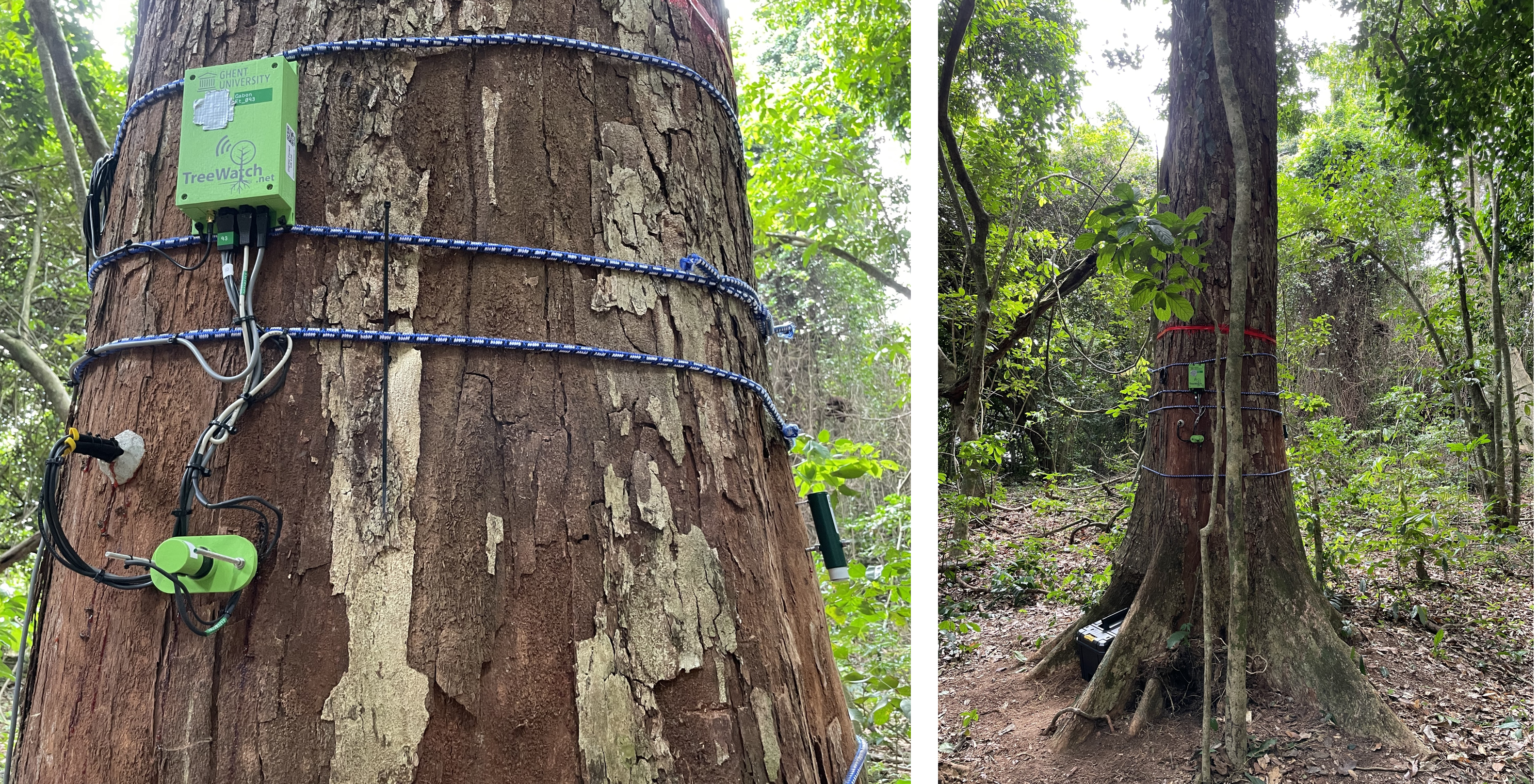CANOPi
Research context and objectives
CANOPi is a Central African Network of Observatories of troPIcal tree and forest functioning. Established in 2022 and generously funded by FNRS and FWO through the EOS program, CANOPi is a collaborative initiative comprising two distinguished Belgian universities, the University of Liège and Ghent University, and two esteemed research institutions in Central Africa, CENAREST in Gabon and INERA in the Democratic Republic of Congo.

At CANOPi, our mission is to delve into the heart of tropical forests in Central Africa, exploring their sensitivity –because they are already limited by water availability– or resistance –because they are adapted to seasonal drought– to drier conditions. To unravel the complex dynamics of tropical forest resilience in the face of climate change, CANOPi adopts a transdisciplinary approach across five work packages.
In work package 1, we assess the extent to which climate, especially seasonal drought, limits the distribution of tropical tree species by applying niche models to georeferenced herbarium records spanning the African continent and existing environmental data layers. In work package 2, CANOPi seeks to identify forests with significant carbon stocks and to determine whether forests act as carbon sinks or sources. Our extensive plot network across Central Africa, including data spanning the 2010-2020 decade, allows us to monitor structural and compositional changes in these vital ecosystems. In work package 3, we quantify the impact of drought on forest and tree functioning through long-term phenological monitoring, encompassing leafing, flowering, and fruiting, and using new measurements with cutting-edge technologies such as phenocams and point dendrometers in two key sites: Lopé in Gabon and Luki in the DRC. In work package 4, CANOPi investigates how African canopy species adapt to the dry season, delving into the potential role of green tissues in local sugar production through bark photosynthesis when leaves are shed, as well as the significance of foliar water uptake. And in work package 5, ground data collected by CANOPi are leveraged to extrapolate trends and produce the first-ever maps depicting the seasonal functioning of forests in Central Africa.
Tree monitoring
In June 2023, the TreeWatch system was successfully installed on a Padouk tree (Pterocarpus soyauxii) situated in the "sud-estuaire" concession nearby Libreville, Gabon. This remarkable achievement was made possible through a collaborative effort with Okala, a company specialised in biomonitoring for conservation.
The TreeWatch system includes a cutting-edge sap flow sensor and a point dendrometer (Natkon), enabling us to gather critical data on the tree's physiological processes. To facilitate comprehensive comparisons, the tree is also equipped with a TOMST point dendrometer, further enhancing our understanding of dendrometric variations. In addition, a state-of-the-art phenological camera (BCC2000, BRINNO) has been strategically placed on a nearby phone antenna, offering a panoramic view of the monitored trees’ crown. This approach allows for the meticulous monitoring of crown phenology, particularly deciduousness. On eight neighboring trees, we have deployed additional TOMST dendrometers, meticulously identifying each tree to the species level. Furthermore, their crowns have been precisely delineated on a reference image, and we have collected vital dendrometric data, including stem diameter and total tree height.
The dedicated team from Okala plays a pivotal role in our efforts, providing invaluable support for data acquisition and equipment maintenance. Their expertise ensures that our monitoring systems function seamlessly, delivering accurate and reliable results.
Tree location
The tree is nestled within the "sud-estuaire" concession, situated near Libreville, Gabon. The satellite image displayed below pinpoints the exact coordinates of the monitored tree.
